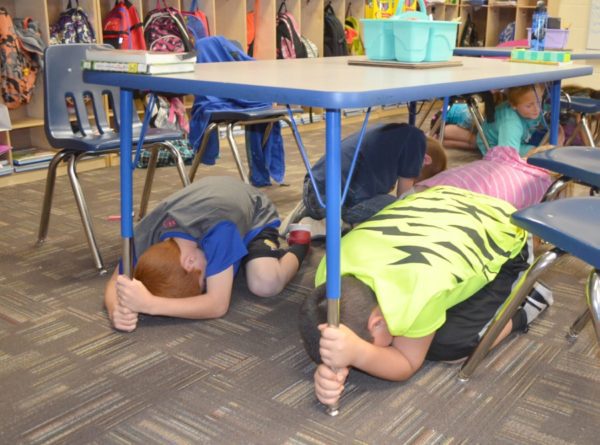Practicing school safety is essential for being prepared for any incident that may happen at your school, such as how to respond to an active shooter situation. For any emergency, schools go into lockdown for the protection of their faculty, staff, and students. Performing lockdown drills as an effort to be prepared could make all the difference in everyone’s survival, should an emergency take place.
There have been record highs of school shootings this past year, and unfortunately, those numbers are predicted to grow before the year is up. Due to the enhanced commonality of danger at schools, it’s impossible not to take precautions if you want to stay safe. Each school should have its own lockdown procedures to adhere to if an emergency occurs. However, below is a step-by-step lockdown drill schools can use as a template to follow.
Step 1: Preparation
Schools need to prepare the staff and students about a lockdown drill, what the drill is, when it will be happening, and the roles of every individual. Staff will need to be able to differentiate on what type of drill they are practicing. Evacuation drills are different that lockdown drills, so make sure everyone involved understands the context of each drill before it happens. To prepare well, staff should:
- Review the floor plan and team member assignments
- Review who is knocking on doors and classroom conversation
- Be prepared for student distress
Step 2: Sound the Alarm
Upon any lockdown drill and actual lockdowns, the first procedure is to let everyone know what is happening. This is typically done with the sound of an alarm that is specific to the lockdown. Upon hearing the alarm, students and staff should:
- Clear the halls and report to the nearest room available
- If your class is outside, stay outside
- Follow the directions of the person leading the drill or in charge of that room
Step 3: Close and Lock the Doors
Once the halls are cleared, teachers in each room need to close and lock all the doors and windows. If an active shooter were in the building, this makes it harder for the intruders to just walk into any room. It’s common for teachers and staff to lock the doors manually for each classroom. However, a better alternative would be having an automatic lockdown system with preventative doors that lock automatically.
Step 4: Count Students
Take a head count of every student in your classroom at this time. Take note of if you have more or less than anticipated. Notify the people in the front office or those who are conducting the drill.
Step 5: Move Students to the Safest Part of the Room
Upon closing the doors and windows, students need to be moved to the safest part of the room, away from the windows and doors and towards the interior walls. Practicing this in a drill will help prepare students for an automatic response, and ensure there is a clear path to the safest place in the room. If your classroom is outdoors, or somewhere not in the building, then move to an evacuation side.
Step 6: Get Out of the Line of Vision
After everyone is away from the doors and windows, everyone should drop down to the floor out of the line of vision.
Step 7: Turn Off the Lights and Close the Blinds
Turning off the lights and hiding out of the line of sight from the door gives off the allusion that no one is in that room, making the probability of an active shooter coming in less. Additionally, closing all the blinds on the windows prevents intruders from seeing into the room, again, making it harder for the active shooter to find a target.
Step 8: Conclude the Drill and Debrief
After the drill is conducted and passes the inspection of the staff, announce the drill is over and debrief. The school should discuss and document any issues that happened, solutions, and overall performance of the drill during the debrief. This is the opportunity to perfect the drills so that if the time ever comes, everyone is better prepared.
Special Considerations
These drills should be practiced multiplied times a year, and during different periods to exercise all possible situations. These potential active shooter situations include:
- During the passing periods when everyone is in the halls
- Before school starts or when school is let out
- When students are at lunch or recess (elementary school)
Be Prepared for Any Crisis
Being prepared for an emergency of any caliber can make a difference between life and death, especially in an active shooter emergency. While this step-by-step guide can be very helpful, consider other lockdown procedures that you may benefit from when preparing for a threat.




